Introduction
The Cuyuna Range was the smallest of the three Minnesota Iron Ranges (see the Mesabi Iron Range for info on another of the ranges). There are no active mines today, but the area, bordered by the Mississippi River on its northern edge, has plenty to explore.
Visitor Information
Direct your questions to the Cuyuna Lakes Chamber of Commerce (218.546.8131).
History
Rumors of iron ore deposits in this area were floating around as early as the 1850s, but no one began to explore the possibilities until the late 1800s. Henry Pajari, a surveyor for the Van Hise Company, located iron ore belts in the north and south Cuyuna Range and tried to map the deposits, but his efforts failed because they were deeper than he could dig. A few years later, though, Cuyler Adams arrived and finished the job, going on to found the Orelands Mining Company and open one of the first underground mines. Adams is also responsible for naming the range, which, in spite of how it may sound, is not derived from a Native American word for this or that. Adams simply combined letters from his first name and the name of his St. Bernard (Una) to come up with Cuyuna.
The first shipment of ore went out in 1911–147,649 tons from the Kennedy Mine via the Soo Line railroad. By 1910 there were more than a thousand miners at eleven active mines. In 1919, the nineteen active mines employed over 2,700 miners and shipped over two million tons of ore.
Workers at the Armour and Kennedy mines organized a major strike that began on April 12, 1913. The 900 miners wanted an eight-hour work day, overtime pay, a minimum wage, and health benefits. The strike was settled in about two weeks when workers and management sat down at the same table and negotiated directly with each other; the miners received improved working conditions and a minimum wage. The prevailing view among folks today is that relations between management and the miners were generally good when everyone (including managers) was local. Eventually, though, the big companies started bringing in out of town managers who imported heavy-handed oversight of the workers; conflict between labor and management escalated after that.
The Cuyuna Range didn’t have the lasting power of the other ranges. The Kennedy Mine closed in 1925; the last underground mine in Minnesota (Inland Armour Number 2) closed June 1, 1967. The Cuyuna Range’s last open pit mine closed in 1982. The towns lost some residents, and the folks who stayed either worked at small manufacturing plants in the area or had to commute to work in other places.
Those abandoned open pit mines and piles of rocks have turned out to have an unexpected benefit, however. Many of them have been turned into recreation areas, with deep blue lakes and challenging mountain biking trails that attract visitors from across the country. While tourism hasn’t replaced the old mining economy, it has helped many Cuyuna Range communities bounce back and stabilize.
Below are brief bios of a few towns in the Cuyuna Range.
Deerwood
(2010 population = 532)
Deerwood was the first village founded in the area. It was originally called Withington but the name was changed in 1882 because it sometimes was confused with Worthington, Minnesota. Deerwood is located along an old portage route that connected the Mississippi River to Mille Lacs Lake.
The loamy soil wasn’t too good for most types of farming, but it was well-suited for fruit crops like apples, grapes, and raspberries, as well as potatoes; by the Depression years, though, few people were left who raised those crops. The area around Deerwood had a lot of resorts in the early years, but, like at Sandy Lake, many were eventually sold and converted to private lake homes.
Crosby
(2010 population = 2,386)
The village’s namesake and founder, George Crosby, chose this site for a town at least in part because there were no known iron ore deposits underneath. The explosive growth of the mining industry created an early housing crunch as miners flooded into the newly developing towns. Some boarding houses rented “hot beds”, which were shared by two men just at different times of day; Joe had the bed during the day, while Boris used it at night. George Crosby built houses in the village that he leased to the mining companies who in turn rented them to miners; as miners gained seniority they could move up to a bigger house for the same rent.
Many of the first residents were immigrants from the Balkans, Italy, Germany, Finland, Sweden, and Norway. Crosby’s early residents settled into ethnic neighborhoods, just like in bigger cities. The northeast part of town was Scandinavian; Lakeview was home for the Finns; and further west was Balkan Street. If you walked along Main Street on a Saturday night, you might feel like you had just arrived a meeting of the United Nations.
In winter, coal dust from the mining equipment and home stoves coated the snow black. The town would also take on a red hue at times because of iron ore-tinted dust; if you hung your clothes out to dry, you had to check the wind direction first or risk having them dyed against your will.
In 1933, in the midst of the Depression, Crosby’s residents, which included a number of immigrants from liberal European countries, elected a communist mayor, Emil Nygard; he was the first communist mayor in the US. At the time he was elected, Nygard, whose father worked as a miner for 51 years, was 26 years old and unemployed.
Ironton
(2010 population = 572)
Ironton was founded around the same time as neighboring Crosby but developed into the place where people went for entertainment, especially if it involved alcohol. The town had a lot of bars that served 3.2 beer when establishments that served it were allowed to stay open two hours later than other bars.
In 1912, the part of town that had been developed the most had to be moved because iron ore was discovered underneath. The Spina Hotel, built in 1913, was one of the best in the area. The building is still around but needs a little help to bring it back to its glory days.
Riverton
(2010 population = 117)
Riverton is located on Little Rabbit Lake, which is really just a section of the Little Rabbit River that enlarged after the Mississippi River dam was built downstream at Brainerd. The town was developed by the Williams Carlson Ore Company beginning around 1912. The town was at the terminus of the Soo Line that connected to the Lake Superior port cities of Duluth and Superior.
Cuyuna
(2010 population = 332)
The village of Cuyuna popped up in 1908, one mile west of the Kennedy Mine, making it the second oldest in the area (only Deerwood is older). By 1910, it had 700 residents. The Rogers and Brown Mining Company built nice-sized houses hoping to attract families, which they felt would provide a more stable workforce than single men. The mining company also provided free entertainment at the Cuyuna Theater. Many of the early miners were immigrants from southeast Europe or Scandinavia and many had previously worked mines on the Mesabi Range or in the Upper Peninsula of Michigan. After the Kennedy mine closed in 1925, many families moved to Ironton or Crosby to be closer to other mines.
Exploring the Area
Crosby
Crosby Memorial Park is a pleasant city park with a generous amount of shoreline along Serpent Lake; the park has plenty of places to picnic and a nice beach, plus a 20 feet tall and 25 feet long statue of a serpent named Kahnah’ bek.
The museum features exhibits about the Milford Mine disaster, which is memorialized at Milford Mine Memorial Park (26351 Milford Lake Dr.; 218.824.1067). In 1924, 41 men drowned when Foley Lake flooded the underground mine. Only seven miners escaped alive. The peaceful park was built at the former mine site. There is a short trail lined with markers, including memorials to each of the men who died. To get there, follow Minnesota Highway 6 north from Crosby, go left on Crow Wing County Road 30, then take the first left onto Milford Lake Drive.
The Soo Line Depot Museum (Crosby: 101 1st St. NE; 218.546.6178; open Memorial Day to Labor Day) is housed in the old railroad depot and features a vintage Scorpion snowmobile from 1964 that was built in nearby Ironton, a birch-bark canoe, and displays on the area’s mining history. The museum also has a replica of the first Man High Project module, an experimental flight in 1957 in which Major David G. Simons spent 32 hours in a three-foot by five-foot capsule attached to a balloon that reached 100,000 feet above the surface. It started its ascent 500 feet deep in the Portsmouth Mine.
Crosby has a few antique stores along Main Street.
Cuyuna Country State Recreation Area
The mining companies left behind a dramatically altered landscape, with deep holes in the ground and tall piles of cast-aside rocks. Over time, ground water seeped into the open pit mines and created deep blue lakes, while vegetation grew atop those piles of rocks. The end result is a reclaimed landscape that is now the Cuyuna Country State Recreation Area .
Lakes are named after the mines that created them (Alstead Mine Lake, Pennington Mine Lake, Yawkey Mine Lake, etc.), and those rock piles are now criss-crossed with challenging mountain biking trails. There’s a swimming beach at the Portsmouth Campground; some lakes are popular for fishing; many are popular places for scuba diving; and it’s a good place to paddle around in a canoe or kayak.
The Cuyuna Mountain Bike Trail System encompasses 25 miles of popular mountain biking trails that range from easy to very difficult, riding through thick forest and next to deep blue lakes and up to scenic overlooks. In winter, some trails are maintained for fat biking, which has nothing to do with your BMI but rather the way bikes are adapted for riding in snow.
If you need to rent equipment to enjoy the outdoors, Red Raven (Crosby: 2 3rd Ave. SW; 218.833.2788) rents bicycles, snow shoes, and cross-country skis. Cuyuna Outfitters (Crosby: 10 3rd Ave. SW; 218.838.1982) rents kayaks (including tandem crystal kayaks) and standup paddleboards for use on area lakes. They will deliver a boat to your starting point and meet you when you are done.
Cuyuna Lakes State Trail
The Cuyuna Lakes State Trail will eventually connect Aitkin and Brainerd with a paved, multi-use trail. For now, the trail has 8 completed miles that run from Crosby to Riverton. There are trailheads and parking at Crosby Mine and in Riverton (on Rowe Road near County Road 128).
Entertainment and Events
Festivals
Every year on the second Saturday in June, the Wood Tick Inn in Cuyuna (County Road 31; 218.772.0252) hosts hotly contested Wood Tick Races, a local tradition that began around 1970.
Deerwood’s Summerfest (mid-August) celebrates the middle of summer with arts and crafts, live music, and a tractor pull with children at the wheel.
Crosby-Ironton Heritage Days (August) celebrates the joint history of the neighboring cities with five days of live music, fried food, a parade, arts and crafts, and a loon-calling contest.
**The Cuyuna Iron Range is covered in Road Tripping Along the Great River Road, Vol. 1. Click the link above for more. Disclosure: This website may be compensated for linking to other sites or for sales of products we link to.
Where to Eat and Drink
Deerwood
Ruttgers Bay Lake Lodge (25039 Tame Fish Lake Rd.; 218.678.2885), a five-minute drive south of Deerwood, has a range of dining options from Northwoods elegant to casual; they are closed in winter.
Crosby
Relax with a tasty craft beer with the friendly folks at the Cuyuna Brewing Company (1 E. Main St.; 218.866.0914).
Victual (124 W. Main St.; 218.545.1000)—a boutique store serving high quality ice cream, cheese, meats, and specialty liquors—can satisfy your desire for a taste of the good life.
For a good cup of coffee and breakfast or lunch, head to Mixed Company, A Kava House (Crosby: 128 W. Main St.; 218.545.1010), owned and run by a fourth-generation resident of the Cuyuna Range.
Red Raven Bike Café (Crosby: 2 3rd Ave. SW; 218.833.2788) is another option for coffee and a light breakfast or lunch.
If you’re in the mood for something heartier, the North Country Café (Crosby: 12 W. Main St.; 218.545.9908) should be able to take care of you with homestyle dishes at affordable prices.
For a tasty meal next to the Mississippi River, head five miles north of Crosby to The Bridge Tavern (26969 Highway 6; 218.546.5219). If the weather’s nice, enjoy a burger or walleye dinner on the big patio.
Where to Sleep
Deerwood
Resorts
Ruttgers Bay Lake Lodge (25039 Tame Fish Lake Rd.; 218.678.2885) may be one of the oldest resorts in northern Minnesota (it opened in 1898) but the lodging is entirely modern; choose from a range of options including condos, cottages, and lodge rooms.
Moderate and up
The Country Inn in Deerwood has 38 rooms decorated in a country-theme; each room has a small fridge and coffee, and some rooms also have a microwave.
Crosby
Camping
Crow Wing State Forest has 31 primitive campsites at the Greer Lake Campground (218.546.5926). From Crosby take State Highway 6 north 12 miles to County Road 36, then turn left; go 3 miles to County Road 114 and turn left; drive another 1½ miles and turn right; the campground is 2 miles down the road.
Crosby Memorial Park (2nd St. SW at 3rd Ave. SW; 218.546.5021) has 26 sites, 20 with water and electric, in a pleasant but compact setting near Serpent Lake; there are also 6 rustic sites on the lakeshore.
The Portsmouth Campground at Cuyuna Country State Recreation Area has 18 electric and 15 non-electric sites. The campground is on the northwest shore of Portsmouth Mine Lake, just off County Road 30 (Irene Ave. in Ironton).
True North Basecamp (825 1st St. SW; 218.833.2267) has 33 lakeside campsites close to the Cuyuna trails, complete with a showerhouse.
For something completely different, there are also 3 yurts available for overnight stays at the Cuyuna Country State Recreation Area (218.546.5926); all are on the west side of Yawkey Mine Lake. The yurts are something like cabins with canvas walls. Each comes equipped with a wood-burning stove, bunk beds, tables and chairs, and windows that open. You’ll still need to bring bedding, and you’ll cook outside with our own equipment, just as if you were camping.
Budget to Moderate
The 16 rooms at Crosby Lofts (30 W. Main St.; 218.325.3317) occupy the upper floors of a historic building in central Crosby. Some rooms lean Spartan and come with bunk beds, while others offer tasteful, private spaces for couples or friends traveling together. All rooms are modern and clean and within an easy bike ride of Cuyuna’s trails.
Cabins
The six mining camp-inspired steel and wood cabins at True North Basecamp (825 1st St. SW; 218.833.2267) offer a comfier place to rest after a day on the trails than a tent. The cabins have heating and air conditioning but don’t have a kitchen, so you’ll still need to make your own arrangements to cook (like a camp stove) or go into town to a restaurant; bring your own bedding, too. There is a showerhouse on site.
Community-supported writing
If you like the content at the Mississippi Valley Traveler, please consider showing your support by making a one-time contribution or by subscribing through Patreon. Book sales don’t fully cover my costs, and I don’t have deep corporate pockets bankrolling my work. I’m a freelance writer bringing you stories about life along the Mississippi River. I need your help to keep this going. Every dollar you contribute makes it possible for me to continue sharing stories about America’s Greatest River!
Cuyuna Iron Range Photographs
- Cuyler Adams; courtesy of the Cuyuna Iron Range Heritage Network
- George Crosby; courtesy of the Cuyuna Iron Range Heritage Network
- Crosby Mine Historical Park
- The serpent called Kahnah’ bek; Crosby Memorial Park
- Deerwood, Minnesota circa 1914; courtesy of the Cuyuna Iron Range Heritage Network
- Ironton, Minnesota in the early days; courtesy of the Cuyuna Iron Range Heritage Network
- Miners posing for a group picture; courtesy of the Cuyuna Iron Range Heritage Network
- Cuyuna State Recreation Area overlook, near Ironton, Minnesota
©Dean Klinkenberg, 2024, 2021, 2018,2013,2011
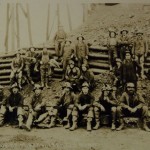

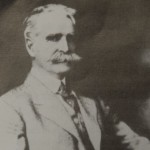
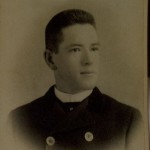
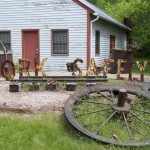
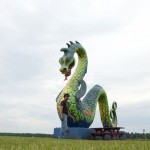
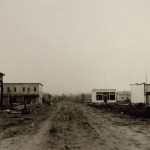

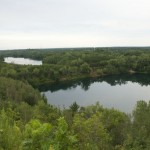
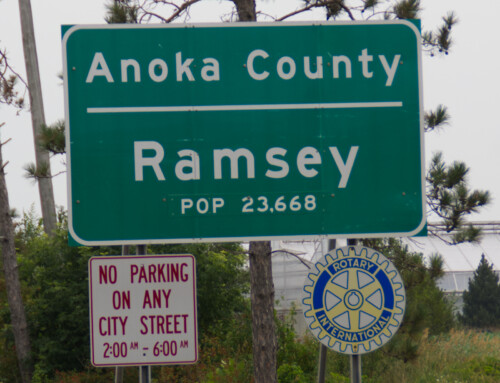
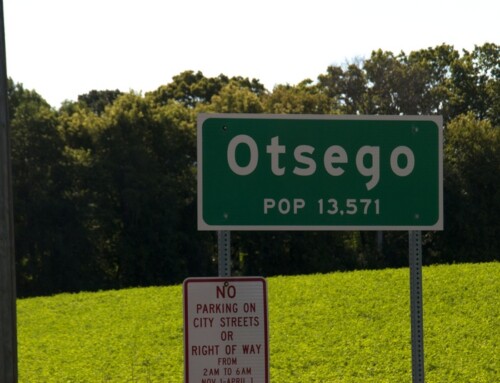
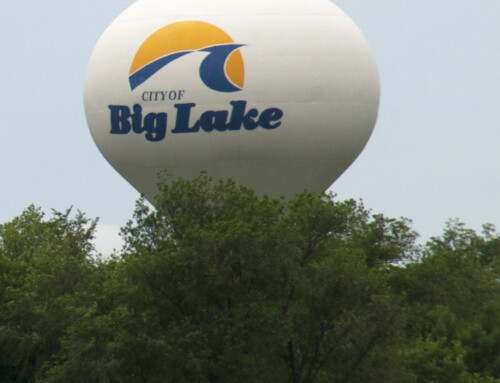
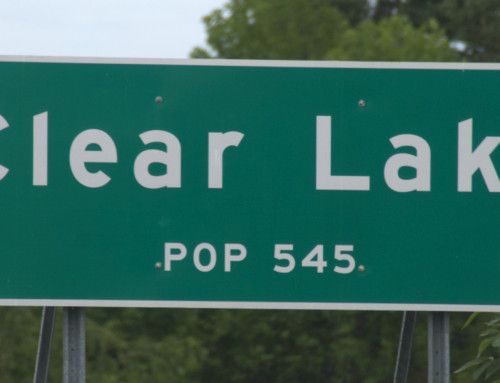

I agree, Nancy! I’m already in the process of updating the information on the website and in my books. I hope to have the updates posted this spring, so check back. Thanks for visiting the site!
This is an interesting article on the history of the area that I now reside in, but the section on where to eat, drink, and stay is badly in need of revision. With the popularity of the mt.biking trails, we now have many restaurants, resorts, and VRBO short term rentals.
Thanks for sharing that memory, Helen! I don’t imagine many people knew about just how much that red/orange tint covered everything. I don’t imagine it was easy to get rid of either!
I really enjoyed reading, but have a little something to add. I was born and raised in Crosby Minnesota area, and grew up there throughout the 50s and 60s. I remember how the iron from the mines tinted everything orange/red. When dad would come home from his shift at the iron mines, he would leave orange stains across the kitchen floor, where he made his way to the dinner table. The roads, cars, buildings, were colored orange/red from the iron mines.